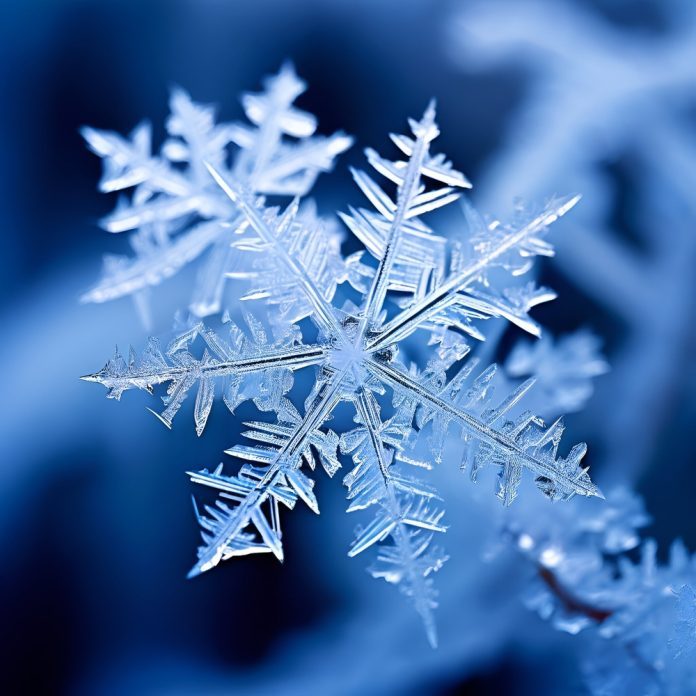Few sights in nature are as intricate and fleeting as snowflakes. Their delicate patterns form a natural wonderland, and capturing these tiny crystalline structures can transform a simple winter scene into a mesmerizing work of art. Macro winter photography offers photographers a unique opportunity to explore the minute details that often go unnoticed during the cold season.
Yet photographing snowflakes is no easy feat. Their small size, constant movement, and quick melting make capturing a crisp, detailed shot a challenge. Coupled with the harsh cold, slippery conditions, and potential for condensation on your camera gear, winter macro photography requires preparation, patience, and the right techniques to succeed.
So, that being the case, let’s explore some practical guidelines for beginners and enthusiasts looking to elevate their winter macro photography. From essential camera gear and settings to lighting tips and protective strategies, you’ll gain actionable advice that will help you capture snowflakes with clarity and artistry while staying comfortable and safe in cold environments.
Table of Contents
- Understanding Macro Winter Photography
- Essential Camera Gear for Snowflake Photography
- Camera Settings for Crisp Snowflake Shots
- Lighting Tips for Macro Snowflake Photography
- How to Protect Your Camera Gear in Cold and Snowy Conditions
- Composition and Creative Techniques for Snowflakes
- Embracing the Challenges of Winter Macro Photography
- FAQ
Understanding Macro Winter Photography
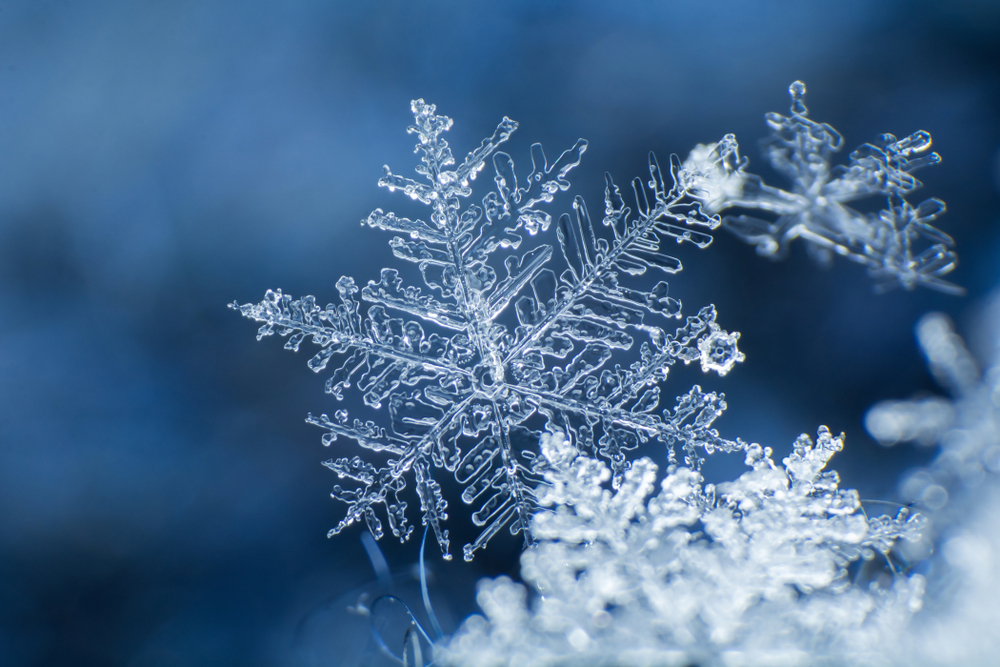
Photo by Mariia Tagirova via Shuttertock
Winter macro photography focuses on capturing subjects at a very close range, revealing details invisible to the naked eye. Snowflakes are ideal subjects due to their intricate geometry and ephemeral nature. Each flake is unique, making it a rewarding subject for creative experimentation.
One of the challenges in winter macro photography is timing. Snowflakes melt quickly upon contact with a warm surface, so photographing them requires preparation and quick reflexes. You must work efficiently and carefully to avoid disturbing the fragile flakes.
Another factor to consider is environmental conditions. Cold, wind, and falling snow can affect both the snowflake and your camera. Being aware of your surroundings and planning shots accordingly is essential to achieve clear, detailed images.
Essential Camera Gear for Snowflake Photography
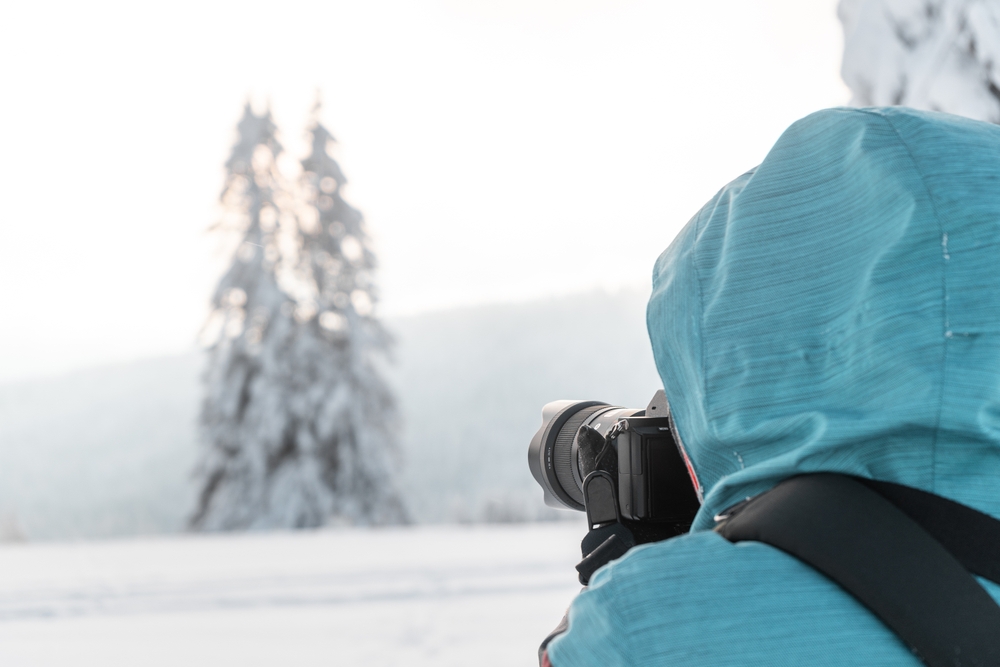
Photo by Philippo99 via Shutterstock
A macro lens is the most critical piece of gear for winter macro photography. Lenses with a 1:1 magnification ratio allow you to capture the intricate details of each snowflake. Prime macro lenses are especially effective because they offer sharpness and clarity unmatched by most zoom lenses.
Tripods or stabilizers are indispensable when photographing tiny subjects in cold conditions. Even a slight movement can ruin a macro shot, so stability is key. Additionally, remote shutter releases help reduce camera shake and allow you to focus entirely on composition.
Accessories that protect your camera from snow and moisture can save your equipment and reduce stress during shoots. The Camera Canopy is an ideal solution for winter macro photography. This device mounts to your camera’s hot shoe and extends over the lens, keeping your camera dry while maintaining full visibility of your settings. Its adjustable shield accommodates telephoto and standard lenses, and the optional rear shield adds protection when using a tripod.
Weather-resistant camera bags, lens cloths, and spare batteries kept warm are also essential. Having the right gear ensures you can focus on capturing the beauty of snowflakes without worrying about damaging your equipment.
Camera Settings for Crisp Snowflake Shots

Photo by AndreiL via Shutterstock
Proper camera settings are critical in winter macro photography. Aperture affects depth of field, which is particularly important when shooting snowflakes. A smaller aperture (higher f-stop) increases the depth of field and ensures more of the flake is in focus. However, very small apertures may require slower shutter speeds, which can introduce blur if the camera isn’t stable.
Shutter speed plays a major role in freezing the motion of falling flakes. Fast shutter speeds are generally preferred to prevent motion blur. If the snow is gently falling, a moderate speed may suffice to capture some movement, giving a sense of natural motion.
ISO adjustments balance exposure without introducing too much noise. In low light conditions, you may need to increase ISO, but it’s important to keep it as low as possible for the cleanest image. Manual focus is often more reliable than autofocus for capturing tiny snowflakes, as the camera may struggle to lock onto a small, transparent subject.
Lighting Tips for Macro Snowflake Photography
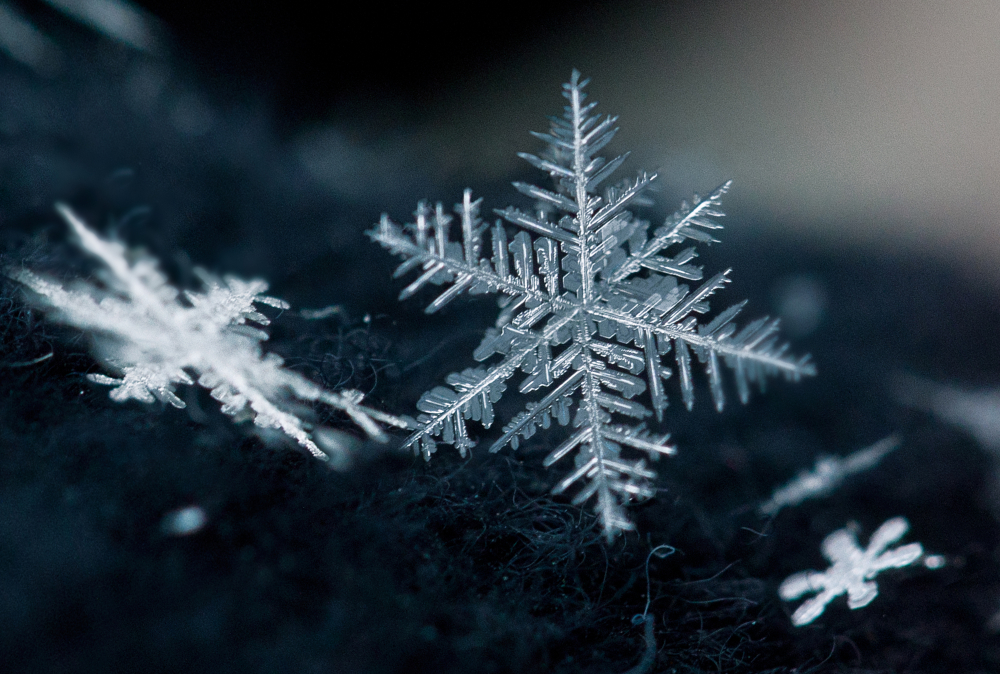
Photo by Shibanova Marina via Shutterstock
Lighting can dramatically affect the visibility of snowflake details. Natural light is often the best choice for winter macro photography. Shooting in indirect sunlight or during overcast conditions reduces harsh shadows and preserves delicate highlights in the flakes.
Diffusers or reflectors can help control the light, softening glare and creating a more balanced exposure. Positioning a small reflector beneath the snowflake can add subtle illumination without melting the snow.
Artificial lighting is another option, especially if shooting indoors or during low-light winter evenings. LED lights or small flashes can provide consistent illumination. Using diffusers with artificial light prevents hot spots and ensures the snowflake remains evenly lit, maintaining the intricate detail of each crystal.
How to Protect Your Camera Gear in Cold and Snowy Conditions

Winter macro photography exposes your camera to extreme conditions. Snow, sleet, and moisture can damage your gear or cause condensation on the lens. Protecting your equipment is as important as choosing the right settings.
The Camera Canopy is an innovative solution for photographers shooting in wet or snowy conditions. By attaching to the hot shoe, it provides a clear shield over the lens, allowing you to continue shooting without worrying about falling snow. The retractable upper shield adjusts for different lens lengths, and the optional rear shield adds extra protection for tripod use. This device keeps your camera functional and dry while allowing full access to controls.
Additional strategies include keeping spare batteries warm, wiping lenses regularly with microfiber cloths, and storing gear in weather-resistant bags. Small precautions can prevent costly damage and allow longer, more productive shoots in winter conditions.
Composition and Creative Techniques for Snowflakes
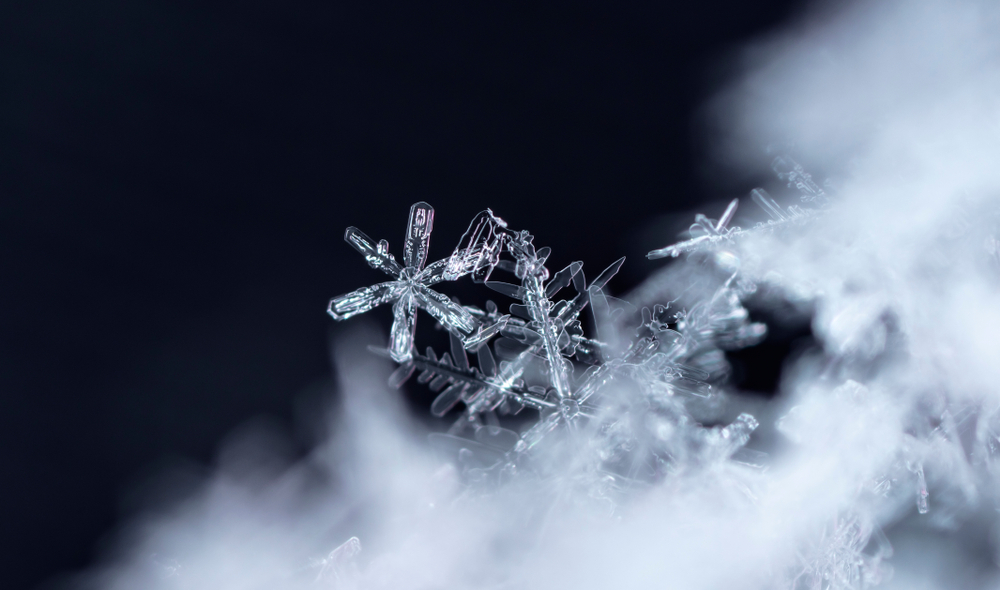
Photo by ch123 via Shutterstock
Composition in winter macro photography helps make snowflakes visually compelling. Choose backgrounds that contrast with the flake to highlight its details. Dark surfaces, fabric, or natural elements like leaves work well to make the snowflake’s structure stand out.
Experimenting with perspective adds interest. Shooting from slightly above or at an angle can reveal patterns invisible from a standard viewpoint. Grouping flakes or capturing clusters can also add depth and context to your composition.
Using reflections or shadows creatively can enhance the texture and dimensionality of snowflakes. Incorporating environmental elements, such as pine needles or frosted branches, helps place the snowflake in a natural context, making your images feel more dynamic and connected to the scene.
Embracing the Challenges of Winter Macro Photography

Macro winter photography rewards patience, careful planning, and experimentation. Each snowflake offers a unique opportunity to explore form, texture, and light. The challenges of shooting in cold conditions can be managed with proper gear, settings, and protective tools like the Camera Canopy.
By understanding lighting, composition, and post-processing techniques, you can create images that capture the fleeting beauty of snowflakes. Embracing the unpredictability of winter weather encourages creativity and builds problem-solving skills as a photographer.
Ultimately, the satisfaction of freezing a snowflake in time makes the effort worthwhile. With preparation, attention to detail, and the right strategies, winter macro photography can yield images that are as delicate and intricate as the snowflakes themselves.
FAQ
What is the best lens for winter macro photography?
A dedicated macro lens with a 1:1 magnification ratio is ideal. Prime macro lenses are preferred for sharpness and clarity.
How do I prevent my camera from getting wet in snow?
Use protective accessories like the Camera Canopy, weather-resistant bags, and lens cloths. Avoid direct exposure to falling snow when possible.
Can I shoot snowflakes handheld?
Yes, but using a tripod or stabilizer is recommended for sharper images, especially with slow shutter speeds or very small apertures.
What camera settings work best for capturing snowflakes?
Use a small aperture for depth of field, fast shutter speeds to freeze movement, and manual focus for precision. Adjust ISO for balanced exposure without excessive noise.
How can I keep my batteries from draining in the cold?
Keep spare batteries warm in an inner pocket and swap them as needed. Cold temperatures reduce battery life significantly.
Just so you know, some of the cool stuff we mention comes with affiliate links, meaning we earn a commission if you buy (no extra charge to you!). Plus, we occasionally feature sponsored content, but rest assured, we only shout out products we genuinely stand behind.
Learn More:
- How to Shoot in Snowstorms: Practical Tips for Beginners
- How to Protect Your Phone Camera in Every Shooting Environment
Hero photo by Jaumnmm via Shutterstock

